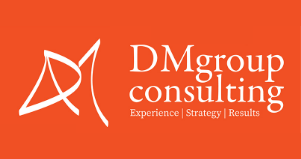Are you one of those fundraisers who only thinks in dollars?
- Annual giving
- Recurring gifts
- Sponsorships
- Ticket sales
Dollars are very important for a nonprofit organization, there’s no question about that, but there’s more than one way to have an impact on the bottom line.
Most of the examples I’m going to share with you do not cost anything to put into place. For example, you don’t need an attorney on retainer to let your donors know that your organization accepts bequests. Language as simple as “Remember ABC organization in your will” can be added to your website, your signature blocks, and as a postscript to all your appeals.
Your gift acceptance policy should have a statement about accepting and selling gifts of stock and other securities. Your organization will need a brokerage account in order to accept these gifts. Check with your bank about setting up this type of account. You will also need clear procedures in place to designate who, within your organization, can accept such gifts, and the timeline for selling the stock, bonds, or other securities. A good rule of thumb is to sell within 72 hours of receipt. You don’t want to play the stock market.
Accepting vehicles as donations may seem overly time consuming, and it could be if you don’t work with a third-party vendor. For example, Charitable Adult Rides and Services is a nonprofit in San Diego, California, that serves other nonprofits across the country as that third-party vendor for vehicle donations. It’s worth checking out.
Some grocery retailers have variations of a Good Neighbor Program. This is where a percentage, usually around 1%, of your donor’s purchases is donated to your organization. This has the potential of raising a decent amount of money, but you will need to encourage your donors/ shoppers to take the time to connect their rewards card to your organization. Restaurant percentage of sale is related to this type of donation program.
Amazon Smiles seems to be the next generation of the grocer charitable donation. Amazon will donate $0.5% to your nonprofit, based on your donor’s eligible purchases.
Lastly, in-kind donations can make a significant impact if they are budget-relieving donations. For example, if your organization needs to buy new computers, but you receive an in-kind donation of 20 new computers instead, then your budget is relieved of that expense. In-kind donations that don’t relate to the mission of an organization can be a burden instead of a gift.
I encourage all of you to tap into as many revenue streams as possible. This is not only a way of raising more money, it’s also another way to engage your donors and keep them connected to your organization.
At DMGroupConsulting, our goal is to help you achieve your goals. Contact us at https://dmgroupconsulting.com/contact/.




